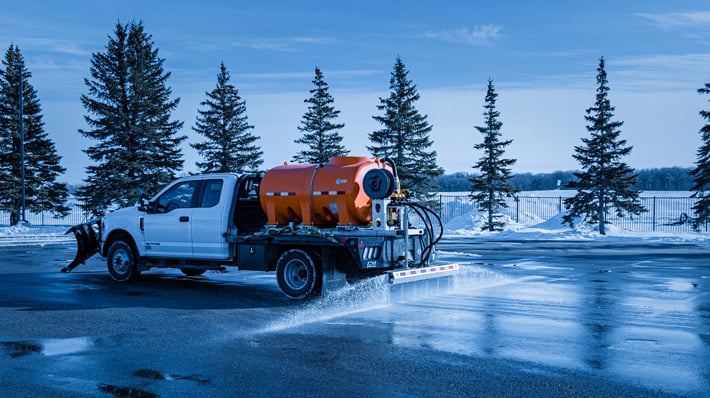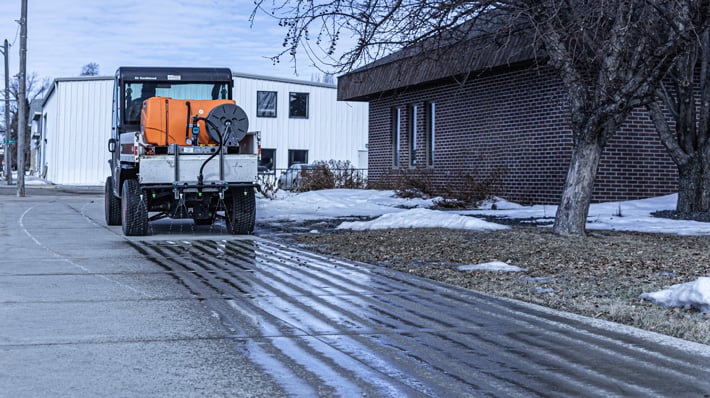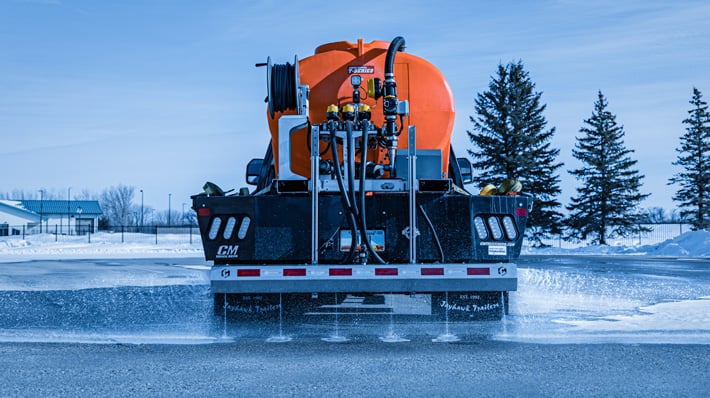
Every day, snowfighters nationwide find new and innovative ways to use brine for their snow and ice control operations. One method that has been growing in popularity is “seasoning” surfaces with liquid brine before the first snowfall of the storm season. In this blog post, we’ll tell you how it’s done, why it’s done, and the pros and cons for snowfighters across the nation so far.
ARE YOU APPLYING TOO EARLY?
Many snowfighters will warn you against putting your brine down too early. Some might even suggest applying brine right as the rain starts. The issue is that if you try applying as rain begins to come down, you’re not giving the brine a chance to settle and react to the surface. In short, your brine will not reach its full potential because it is getting washed away by the rain.
One of the reasons I advocate pre-treating with brine for snow events that start with rain is that if you get enough brine down, it will actually go down to the surface. Following that logic, you could continuously pretreat a surface days before the rain starts and still see effective results.
SEASONING A SURFACE: HOW AND WHY PEOPLE DO IT

One of the best ways to describe seasoning a surface with brine is to compare it to a cast iron pan. When you look at a cast iron pan, you don’t see its porosity. Instead, you add oil or grease to the pan, and that gets down within the pan’s surface and makes it slick. It’s the same idea for applying brine to a surface.
Seasoning a surface is a method that has worked for some in their proactive snowfighting playbook. Some snowfighters will go out before the first snowfall of the storm season and apply brine to their surfaces up to seven times! When that brine dries into the surface's pores, it will “season” the surface and continue to melt snow and ice up to a week before the first storm.
You can’t necessarily see the porosity on the surface you’re applying brine to. However, following the same logic as before, the more brine you apply, the more that gets into the surface, giving it less of a chance to wash away. If you’ve thoroughly seasoned your surface with brine, by association, it will likely have less of a chance of being washed away during snow, ice, and freezing rain events.
PROS AND CONS OF SEASONING

The thing to take away from this process, like all snowfighting processes, is that at the end of the day, you have to do what is most effective for you and your operation. Some snowfighters like to pretreat with brine before every storm no matter what the forecast is to season their surfaces, and others like to play it looser and decide the best method to prepare storm by storm.
What works for one surface may not work for another. Just because a few snowfighters have successfully seasoned their surfaces by pretreating with two-to-ten brine applications doesn’t mean that it will work the same for you and your operation.
However, those that have tried seasoning a surface have noted that they’ve saved a substantial amount of money year by year on the back end by reducing their cost of labor. With seasoned surfaces taking care of the bulk of the work, snowfighters spend less time in the field and more time acquiring more contracts.
On the other hand, one tricky aspect of seasoning surfaces deals with pricing. There isn’t a clear-cut way to charge for seasoning a surface yet, so most snowfighters have given away these pretreatment applications for free. While they can justify the long-term savings in seasoning surfaces, it may not be cost-effective for you to double or triple your applications for free.
What we do know for sure is that liquid brine is a versatile tool for your snowfighting arsenal, and snowfighters are finding innovative ways to use it every season. Considering making the change to liquids? Read our informative ice control blog and learn from snow professionals today.



